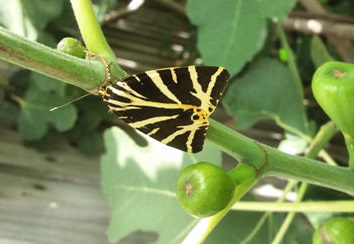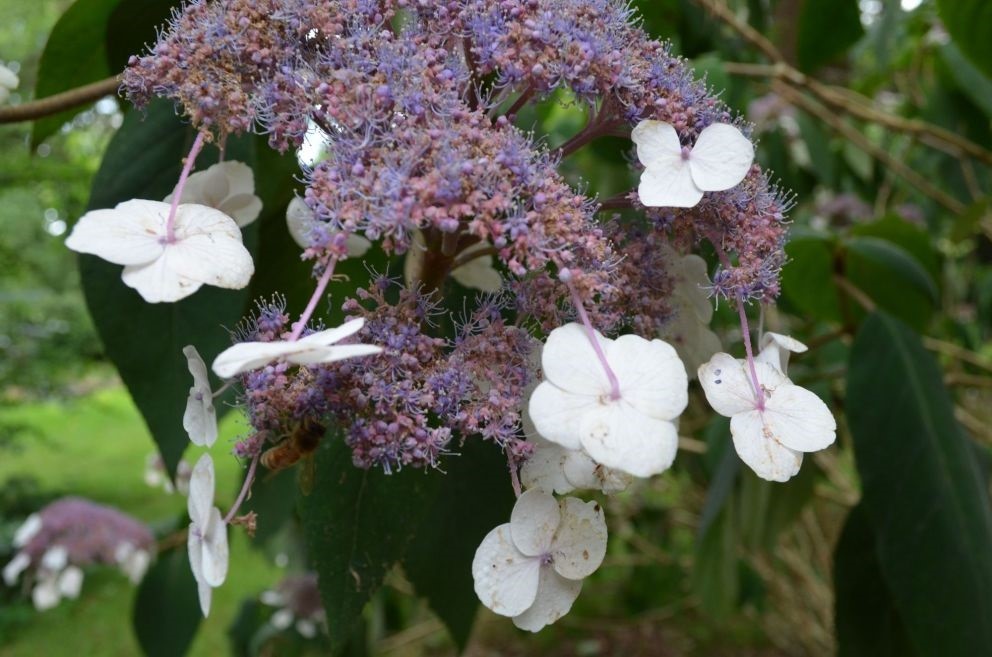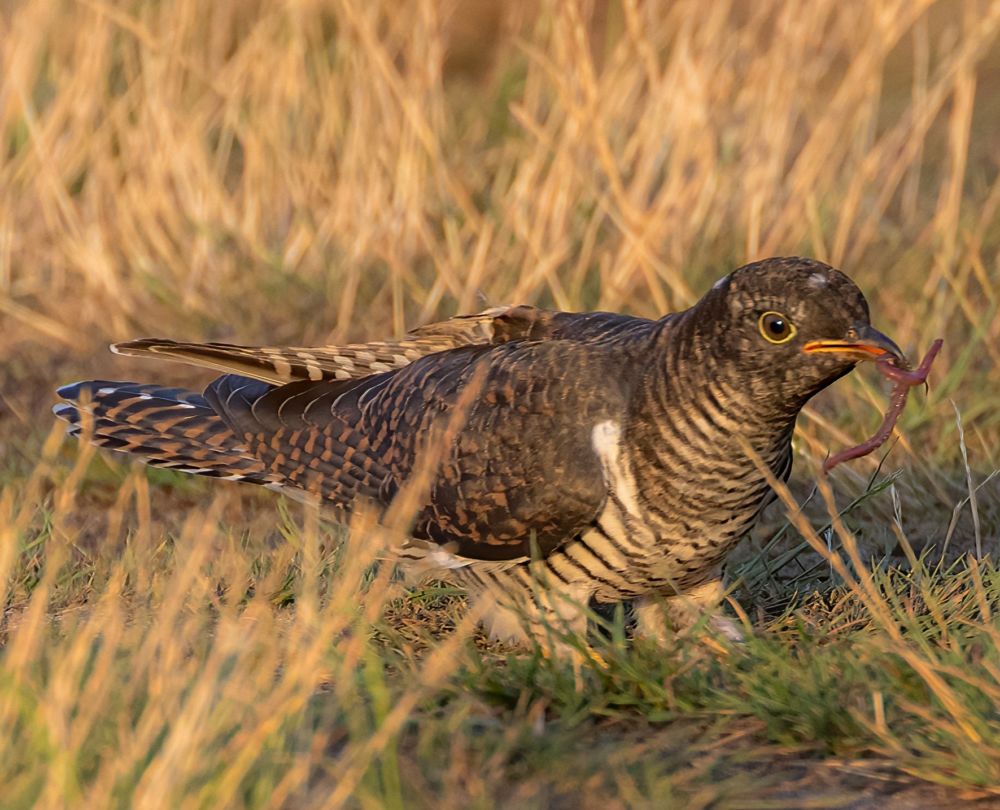Photo: Juvenile Cuckoo by Paula Redmond
Re-opening the Park
The Royal Parks (TRP) has announced the next steps in re-opening the Park following the lock-down; in summary, from Tuesday:
- The car parks at Kingston, Roehampton and Sheen Gates and Pembroke Lodge will be open on weekdays only, accessed from the nearest gate.
Blue badge holders can park in Sheen Gate car park on weekends, accessed via Sheen Gate from 07:00 – 19:00.
The Park roads and remaining car parks will remain closed to traffic at all times. - Cycling will be permitted on all the Park roads on weekdays only. Weekend cycling will continue to be restricted.
- The toilets Kingston Gate, Roehampton Gate, Sheen Gate, Ham Gate, Robin Hood Gate, Petersham Gate, and Richmond Gate are open. Only the Pembroke Lodge toilets remain closed.
- Petersham Playground is now open; Kingston Playground remains closed for repairs to some equipment.
- Isabella Plantation will re-open on Monday.
See TRP’s full announcement
Movement Strategy Projects
TRP has also announced the next stage of their Movement Strategy with an Implementation Plan to reduce through motor traffic in all the Parks. They plan a six-month trial projects in each Park, to start once they have eased the current COVID-19 restrictions and car parks are open again. The projects in Greenwich, Bushy, St James/Green and Hyde Parks have been defined, the project in Richmond Park will be defined in a few weeks’ time; we’ll let you know of the trial for Richmond Park when we know. The trials will be monitored and evaluated jointly with TfL and local authorities and TRP will be looking for stakeholder feedback. See TRP’s announcement and the Implementation Plan
AGM
The Friends AGM in April was postponed because of COVID-19. We will now be holding it via a Zoom call on Saturday 22 August at 11.00 am. We are asking members to notify [email protected] by 16 August if they want to join the call and to send us questions or concerns they would like discussing. There is more information, including our Review of 2019, in an insert in the printed summer newsletter which you will be receiving shortly (or may have already received). While there will be some formal business, the large majority of the ‘meeting’ will be devoted to discussion of what is happening in the Park and it should be interesting!
Please note it will be members only.
Re-start of Friends volunteering
As Richmond Park gradually re-opens we are re-starting our volunteer activities. The Adopt an Area (AaA) litter picking team, which is outdoors and has no direct contact with the public, was the first to formally re-start last week and the small Beverley Brook conservation team re-started on Tuesday. You will have observed that, like most other open spaces in the country, there has been a noticeable increase in the number of visitors, and sadly a huge increase in litter. Many members of the AaA team continued litter picking informally whilst the formal suspension was in place. They are to be congratulated for their dedication to the Park, and TRP management has praised them for their valuable contribution.
Tuesday’s haul by the 8 person Beverley Brook team amounted to 5 full black bags of assorted rubbish plus a large empty suitcase. Well done to all the team! – a challenging job retrieving all that rubbish from the bed of the brook.
We are discussing with TRP how to re-start the Visitor Centre in the near future and we expect our main conservation volunteers to be able to start their season at the end of August as normal. We have no date yet for the re-start of our Discoverers or our Walks and Talks programmes. If you see the AaA or Beverley Brook volunteers please give them a warm welcome!
Submission to Airspace consultation
The Friends recently made a submission to the Civil Aviation Authority’s’ consultation on the process for the Airspace Change Masterplan. This is one of the steps in a Masterplan that could see flight paths directly over Richmond Park for the first time. In spite of being a public consultation, it was publicised only to the airspace sector.
The document is technical and difficult to understand and we focused on three aspects: the lack of involvement of (and indeed bias against) non-aviation industry stakeholders, the failure to properly consider noise, and the need to thoroughly review the case for Performance Based Navigation (PBN) the new technology that is driving the introduction of flight paths over Richmond Park. To read our submission, go to our web page and click on the link.
Swan Sanctuary fundraiser
Jamie Gould, a Richmond Park horticulture apprentice, and his friend Alex are doing a 1,000-mile bike ride to raise funds for The Swan Sanctuary and to highlight the recent fatal cygnet attack at Pen Ponds and other swan-related incidents.
Click here for details of the boys’ bike ride and how to donate to this very worthy cause.
The Swan Sanctuary rescue and treat many swans and other waterfowl from Richmond Park and other Royal Parks and are very deserving of our support.
Enter our Summer Tree Photography Competition
This competition is part of the Friends of Richmond Park’s 2020 The Year of the Tree. The overall theme is images that show the character of the Park’s trees. Images can be of any part of a tree, whole trees or groups of trees. Entrance is free. Details of how to enter, including the prizes and Terms and Conditions. (The email address for applications, on the website, was inaccessible for a brief time, but has now been fixed). The competition closes 30 September.
Tips for photographing trees by expert tree photographers Len Jenshel and his partner Diane Cook.
July Tree of the Month – The English Oak
English Oak trees can live for many hundreds of years and they hold a special place in our culture and history. Richmond Park is one of the best places to see ancient and veteran oaks, including one that has become known as The Royal Oak – a drawing of this is our emblem for 2020 The Year of the Tree. Download a facts sheet from our website.
Good response from dog walkers
The requirement for dogs on lead throughout the Park during the birthing season ended on 6 July. TRP had no reported incidences of dogs chasing deer during the period, compared to at least one every two days in the prior 2-3 weeks and as far as we know there were no serious incidents of dogs attacking deer or vice-versa. Thank you to all our members who put their dogs on a lead, in spite of the inconvenience and the lack of observance of the requirement by others.
Dogs still need to be on lead in these areas:
- around Pen Ponds, Adam’s Pond and Bishop’s Pond,
- in Isabella Plantation
- and for the next few weeks in the skylark areas of Lawn Field near Pan Ponds and Crown Field next to the rugby pitches
TRP says it with flowers
In celebration of the NHS’ 72nd birthday, The Royal Parks charity has created two special flowerbeds in front of Buckingham Palace, containing 45,000 white and blue flowers. Measuring 12 metres by 5 metres, each flowerbed spells out NHS in giant letters that can be enjoyed by park visitors and even viewed from the sky. The special flowerbeds are located in the iconic setting of the Memorial Gardens that is part of St James’s Park, and sits in front of Buckingham Palace. Here’s a 2 minute video, by the team responsible for the project, and a glimpse of the new beds in place.
Too close to wildlife
We all love to see beautiful photos of Richmond Park wildlife. It often requires great patience and skill to get that perfect shot. The majority of regular park photographers enjoy their art whilst respecting the privacy of their subject, but lately there has been an increasing amount of inappropriate behaviour by some. Around 30 photographers were spotted ‘camped’ very close to a kestrel nest, causing the birds to be agitated and nervous. Another example was when up to a dozen photographers spent 5 hours close up to a little owl nest. There have been many more incidents.
Here’s what the RSPB say:
Birds respond to people in many ways, depending on the species, location and time of year. Disturbance can keep birds from their nests, leaving chicks hungry or enabling predators to take eggs or young. During cold weather or when migrants have just made a long flight, repeatedly flushing birds can mean they use up vital energy that they need for feeding. Intentional or reckless disturbance of some species at or near the nest is illegal in Britain.
Whether your particular interest is photography, sound-recording or birdwatching, remember that the interests of the bird must always come first. Avoid going too close to birds or disturbing their habitats – if a bird flies away or makes repeated alarm calls, you’re too close. And if it leaves, you won’t get a good view.
If you witnesses any wrongdoing you can contact the Park Police on the duty mobile 07920 586546 so that they can attend and try and deal with the persons on site. The Royal Parks and other open spaces regulations 1997 section 4(20) states “No person using the park shall fish, take any egg, or intentionally injure or worry any animal or bird.”
Discoverers News
 |
Though our Discoverers Moth Weekend at the end of June couldn’t take place, this is a good time of the year to look out for these secretive creatures. Moths are mainly nocturnal, though some, like this beautiful Jersey Tiger, can also be seen in the day time, and seem to be thriving in London! To see moths, all you need is a warm still evening, with no Moon to distract them; a bright light, and a white sheet. See here to discover what could be flying tonight!
Cuckoos!
(See our main photo of a juvenile cuckoo, by Paula Redmond).
Cuckoos are not commonly seen and have now stopped calling, so it was an
enjoyable experience for some our birdwatchers to observe an adult male cuckoo feeding on worms and caterpillars in the Park last month before departing for Africa. Because cuckoos lay their eggs in the nests of other unsuspecting birds and have nothing to do with their upbringing, it was a rare coincidence to see this same male later in the day feeding in the company of a juvenile cuckoo. The male was distinctly grey coloured in contrast to the rufous-brown of the juvenile with its defining pale nape spot. Sadly cuckoos have declined in numbers and are on the red list of birds of conservation concern.
Richmond Park Police Panel
The Safer Parks Panel (SPP) had another quarterly meeting this week with most of the Park stakeholder groups managing to join via Zoom. This meeting covered an absolutely extraordinary period for the Park, spanning from early Lockdown, through very hot weather when people were encouraged to visit parks, to the relaxation of Lockdown – and included changes to both cycling access and dogs-on-leads controls. Visitor numbers peaked at a level never seen before, including many people unfamiliar with Richmond Park.
This was reflected in the police reports: in a typical month there would be about 600 verbal warnings, breaches of park regulations, and penalty notices (fines). In May and June it was close to 2,000/month. This was mainly due to steep rises in deer harassment, cycling during the Covid-19 restrictions, and non-compliance with the mandatory dogs-on-lead restrictions for the deer birthing season. The Parks Police also noted that reports of dogs chasing deer were down 90% during the dogs-on-lead mandatory period.
Proposed building development
FRP tries to keep any eye on nearby development proposals which we think would have an adverse impact on the Park. One which we have recently objected to is currently with Kingston Borough Council under reference 19/02323/FUL. The site is at Canbury Place car park and 12-52 Kingsgate Road. The development would consist of three buildings with a variety of commercial uses and 389 residential units.
As originally designed, the tallest building would have 25 storeys, but it has been reduced to 17. Even that reduced version would have a height of 73.8 metres. It would impact the Park because it would break the skyline when viewed from the benches just north of Thatched House Lodge; that viewpoint is identified in the Kingston Town Centre Action Area Plan as being a ‘very highly important view’.
The application can be inspected on Kingston’s website, and comments may be made until 29 July.
July in the Isabella Plantation
Flowering and Shrubs
Large, late flowering rhododendrons can be found in the south section of the garden, between the stream from the Still Pond and the main central stream. They have pink and white fragrant flowers and include many hybrids of Rhododendron auriculatum. Many rhododendrons are now producing handsome new leaves. These are often covered with a soft felt layer, which is white or ginger, and known as ‘indumentum’. In the secluded lawn to the south of Thomson’s Pond the first giant flowers of the Magnolia grandiflora are set amongst glossy evergreen leaves. They have thick fleshy cream petals and a delicious citrus scent. Clethra barbinervis with its long racemes of white fragrant flowers can be found on the path leading from the Top Gate leading down towards Bluebell Walk, near the entrance to Wilson’s Glade.
Heather Garden
“Button Bush”, Cephalanthus occidentalis, set back from the path leading to the Bog Garden. This shrub bears creamy-white flowers in small globular heads, which are very attractive to butterflies.
Bog Garden
In the Bog Garden the tall yellow spires of Ligularia przewalskii are set against a backdrop of bamboo, and the Gunnera manicata spreads its giant prickly leaves. Here, and by the streams, many varieties of Hemerocallis, the ‘Day Lily,’ flower amongst iris. Bell-shaped, fragrant yellow of the “Giant Cowslip”, Primula florindae show in the marginal bed alongside the decked walkway. The wild flowers of ‘Purple Loosestrife’ and the frothy white blossoms of ‘Meadowsweet’ grow alongside more exotic plantings. Look out for butterflies visiting the Joe Pye weeds (Eupatorium purpureum) with its stately pinkish purple flowers. Water lilies open on Thomson’s Pond, where dragonflies and damselflies hover and dart over the water on warm still days. Just off the central path look out for the soft pink flowers of the ground cover plant Persicaria affinis ‘Superba’.
The Birthday Mound
Hydrangea quercifolia with its large oak shaped leaves and abundance of frothy white flowers heads can be found putting on an impressive show on the banking surrounding the Red Oak stump.
Foxglove Tree Glade
Hydrangea aspera, flowers in the glade set back from the Still Pond, this magnificent large leafed shrub produces large heads of porcelain blue flowers, with a ring of lilac-pink or white ray florets.
Azalea Feeding
Streamside Azaleas are fed with an organically approved seaweed based feed after flowering to encourage vigour, disease resistance and flower production the following spring.
Lawn Creation
The gardeners and volunteers have been busy clearing debris in areas where Rhododendron ponticum has been removed. The ground has now been rotavated and sown with grass seed. The team will then begin to replant these areas with new plantings throughout the autumn and winter months.

Hydrangea Aspera


